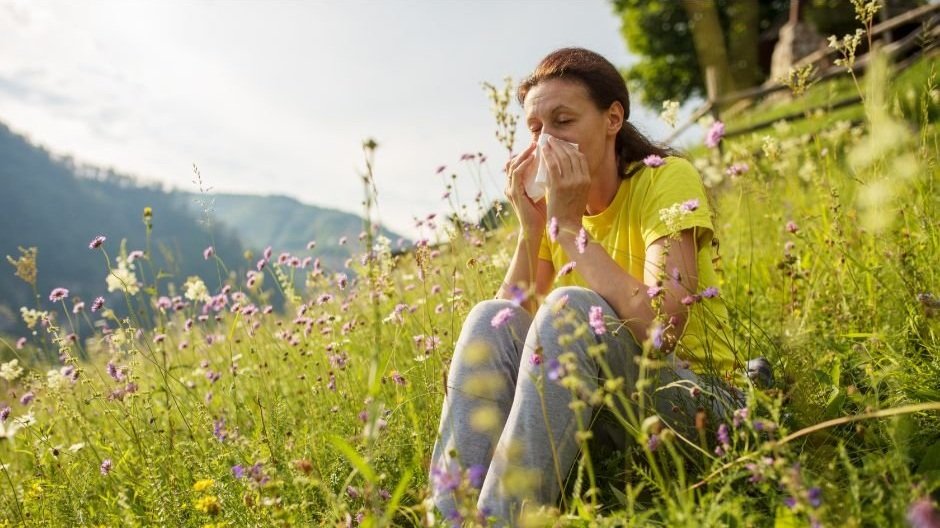The Allergy Calendar: Mapping Seasonal Allergens
Discover > Texas Mom Blog > The Allergy Calendar: Mapping Seasonal Allergens
I, like many other individuals, always have to contend with my morning allergies each time I wake up. It's not a cold or an infection but it's just my allergic rhinitis acting up again. This genetic trait that we all get from our family's gene pool is something that a lot of people have to live with. As the saying goes, 'It's in the blood.'
But this doesn't necessarily mean we have to limit ourselves by avoiding exposure to allergens altogether by living in our allergen-free bubbles. I can't even imagine a life without having to see the great outdoors. This is especially true for us Texans where getting out hands in the dirt and out in the field is part of our cultural DNAs as a state.
Texas, the Lone Star State, known for its stunning landscapes, cowboy culture, and barbecue, is a place like no other. However, it also bears the title of 'Allergy Capital.' Yes, allergies! Those sneaky triggers like pollen allergies, dust mites, and grass pollen transform our beautiful Texas from a place of wonder into a minefield for those with sensitive immune systems.
Understanding Seasonal Allergens
Before diving into the allergy calendar, let's take a step back and explore the world of seasonal allergens. These are the troublemakers that trigger your allergic reactions, turning peaceful times of the year into a sneezing, itchy-eyed conundrum.
Allergies are the body's immune system's reaction to substances that are usually harmless. When you have an allergy, your body's immune response and system identify the allergen as an invader. This prompts an immune response, causing symptoms like a runny nose, itchy eyes, and nasal congestion. Let's dive into these seasonal offenders:
Pollen Allergies
These are arguably the most common seasonal allergies. Pollen, small and lightweight, can travel great distances on the wind or with traveling bees that buzz around harvesting pollen for their hives, meaning that even city dwellers can be affected by pollen allergens from the countryside.
The culprits include tree pollens in the spring, grass pollens in early summer, and weed pollens, such as ragweed, in late summer and fall. Keeping track of the pollen seasons and levels can help you prepare and manage your symptoms better. Also, having some antihistamines and a saline nasal drip wouldn't hurt.
Mold Spores
Molds are fungi that thrive in warm, damp environments, and their spores can be airborne allergens. Outdoor molds can cause allergies in the summer and fall, or year-round in areas of Texas with warmer climates.
Molds can also be found indoors, so it's crucial to keep your house dry and well-ventilated to prevent mold growth. Always keep a close eye for leaks on the roof, or any heavily used sections of plumbing like the kitchen sink drain. These spots are usually hotspots for mold growth and can trigger unwanted bouts of allergies or, in worse cases, cause sickness.
Dust Mites
Although not strictly seasonal, dust mite allergies can worsen in winter when we spend more time indoors. Dust mites thrive in warm, humid environments, and they're often found in bedding, upholstery, and carpets.
Indoor and Environmental Allergies
Pets, insects, and cockroaches are examples of indoor allergens. They can cause allergic symptoms year-round, and the severity of allergic reactions can vary depending on the person's immune system and the level of indoor allergens.
By understanding these seasonal allergy triggers, we can better prepare for and alleviate the unpleasant symptoms they cause. Knowledge is power, especially when it comes to tackling seasonal allergies - it's best to be well informed.
Seasonal Allergens: What You Need to Know
Find a comfortable allergen-free spot to relax in since we're going to walk you through the allergy season and calendar, revealing the ups and downs of the allergy seasons [as well as the ins and outs of irritated nasal cavities]. It's like a roller coaster ride but for your nasal passages.
Winter Time and the Sniffles (December - February)
Winter rolls in with the 'February Freeze' and ragweed season finally comes to a close, but there's no time for our allergy sufferers to relax. Indoor allergies become the star of the show, thanks to dust mites and mold spores. A stuffy nose, watery eyes, and nasal congestion make themselves known, making it the perfect time to stock up on nasal sprays nose drops, and oral decongestants.
The Springtime Thaw and Allergy Symptoms (March-May)
As the freezing temperatures start to wane, we step into the ring with spring allergies, aka tree pollen allergy season. Oak, ash, pine, and cedar - are lovely to look at, but they release tree pollens that can lead to symptoms like an itchy nose, sneezing, and nasal stuffiness. So, it's time to bring out the corticosteroid nasal sprays and keep those nasal symptoms at bay.
A common allergen during this time is the pollen from our blooming flowering plants. You can keep track of the pollen counts using pollen forecasts or even undergo an allergy test to identify your specific triggers. And hey, it's always a good idea to keep those allergy medications close by!
Summertime Allergies from Pollen (June - August)
By the time summer dances into view, grass takes center stage. Yes, the grass pollen season has arrived, signaling the start of summer allergies. Bermuda grass, Timothy grass, and Kentucky bluegrass are the usual suspects. Meanwhile, your air conditioning unit can become your best friend, filtering out the airborne pollen and giving some relief from your symptoms.
With the heat of summer comes another villain in our allergy narrative - weed pollen. In particular, ragweed pollen turns late summer and falls into a hay fever hotspot. The symptoms can range from itchy eyes to a sore throat, with the stuffy nose being a common complaint. Over-the-counter allergy medication, nasal corticosteroids, or even allergy shots (allergen immunotherapy) can help manage these symptoms.
Fall and those Pesky Mold Spores (September - November)
As we move into fall, those allergic to mold spores might start to feel the pinch. Wet leaves and damp weather encourage mold growth, and the resulting spores can cause allergic reactions. It's time to take action to prevent nasal congestion and runny nose.
Winter comes back around, and while we say goodbye to the pollen season, dust mites make a comeback. It's a year-round battle, isn't it? From skin prick tests to sublingual immunotherapy, it's essential to consult your doctor about the best course of action for your specific seasonal allergy symptoms.
Plug that runny nose by managing it
Managing allergies isn't just about the right medication or nasal sprays. It's about understanding your environment and how it changes with the times of the year. You have to be aware of what's triggering your immune system reaction and how to relieve your sneezing or watery eyes, whether it's due to spring allergies, fall allergies, or even the mold that comes with the cooler temperatures.
Keeping track of pollen levels and suspected allergens can give you a head start. Also, having your arsenal of home remedies helps a lot. Here are some things you can do at home to relieve those annoying allergic attacks.
Home Remedies
When seasonal allergies hit, it can feel like you're under siege from pollen allergies, dust mites, and mold spores. The constant sneezing, itchy eyes, and nasal congestion can be draining. While medication and allergen immunotherapy are effective, there are also several home remedies you can use to alleviate allergy symptoms.
Dust Mite Defense
Dust mites can be a significant cause of year-round or indoor allergies. Combat these critters by encasing your mattress and pillows in dust-proof covers. Regular washing of your bedding in hot water can also help, as can vacuuming your home with a HEPA-filtered vacuum cleaner.
Avoid Smoke Inhalation
Smoke from cigarettes or fireplaces can irritate your nose and throat, making your allergy symptoms worse. Avoid environments where there's smoke, and if you're a smoker, consider quitting.
Humidify
Dry air can aggravate your nasal passages and throat, making your allergy symptoms worse. Using a humidifier to maintain optimal humidity levels in your home can provide some relief while also using essential oils like peppermint to clear those nasal passages. But beware of going overboard; too much humidity can encourage the growth of mold spores and dust mites.
Clearing Your Nasal Passages
A saline rinse can be beneficial in relieving nasal congestion. These rinses, available over the counter, can help flush out allergens and mucus from your nasal passages. Also, as mentioned before, essential oils can be used in humidifiers as a natural nasal decongestant.
Keep the Outdoors Outside
If you're suffering from a tree pollen allergy or grass pollen is triggering your symptoms, try to limit the amount of pollen that gets into your house. Remove your shoes at the door, change clothes after being outdoors, and shower before bed to wash away pollen from your hair and skin. Keeping windows closed and using air conditioning can also help reduce indoor pollen levels.
While Texas can seem like an allergy minefield, with a little bit of planning and a lot of knowledge, it's possible to manage seasonal allergies. And remember, while high blood pressure, allergy symptoms, and allergic reactions can seem daunting, help is always around the corner.
Whether it's your family doctor, over-the-counter medications, or even prescription medicines, you're not alone in this fight. Managing seasonal allergens often involves a combination of strategies: reducing exposure to allergens, using medications to relieve symptoms, adopting a healthier diet to boost one's immune system, and immunotherapy for long-term relief. It's vital to consult a healthcare provider to discuss the best options for you, which might include over-the-counter medicines, prescription drugs, or allergy shots.





